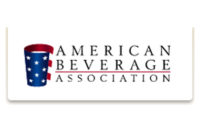TECH FLASH
Nestlé marks achievements in nutrition and sustainability
Its 2015 Creating Shared Value Report also reveals gains in other areas

Nestlé says it has achieved 11 of its goals in terms of nutrition, health and wellness, environmental sustainability, water, rural development, responsible sourcing and social impact.
But, despite these achievements, the global food manufacturer has established 16 new forward-looking goals that will have a positive impact on its consumers. These include continuing industry leadership in nutrition and health research, as well as reaching zero-waste-to-landfill status in 35 US factories.
In response to shifting consumer preferences, Nestlé reformulated 1,222 food and pet products in 2015, reducing sodium, sugar, trans fats and artificial colors and flavors, while increasing essential nutrients.
“Actions speak louder than words, which is why we are so pleased to share our progress against commitments in the 2015 Nestlé US Created Shared Value Report,” says Paul Grimwood, chairman and CEO of Nestlé USA. “We’re proud of the progress we made in 2015 and are excited to build upon that foundation as we work to continue to improve sustainability in the communities where we work and operate.”
Highlights from the 2015 report include:
Responsible sourcing: Nestlé completed 522 supplier audits in the US, 115 percent of its 2015 target.
Cage-free eggs: Nestlé continued its efforts toward implementing the exclusive use of cage-free eggs in the US food and beverage portfolio by 2020.
Reducing water usage: By creating efficiencies and reducing waste, Nestlé factories will employ new techniques projected to save 144 million gallons of water annually.
New objectives include boosting nutritional education through engaged conversation and the Balance Your Plate program, as well as addressing human rights violations in the supply chain. Specifically, this means implementing collaborative actions to address forced labor in Thailand’s seafood supply chain. The company also says it will pursue more efficient uses of water within its dairy business and become an employer of choice for veterans.
Looking for a reprint of this article?
From high-res PDFs to custom plaques, order your copy today!








